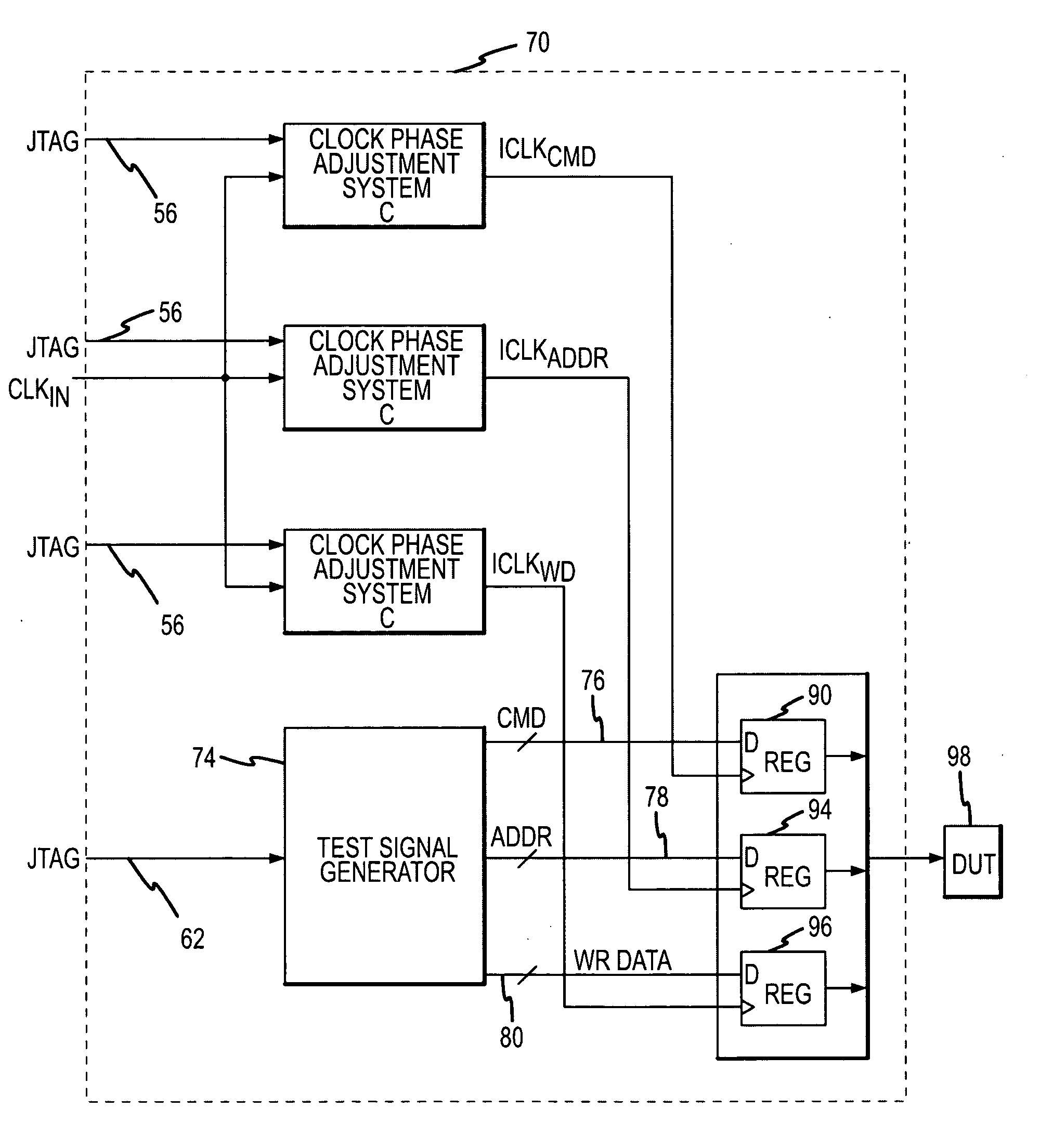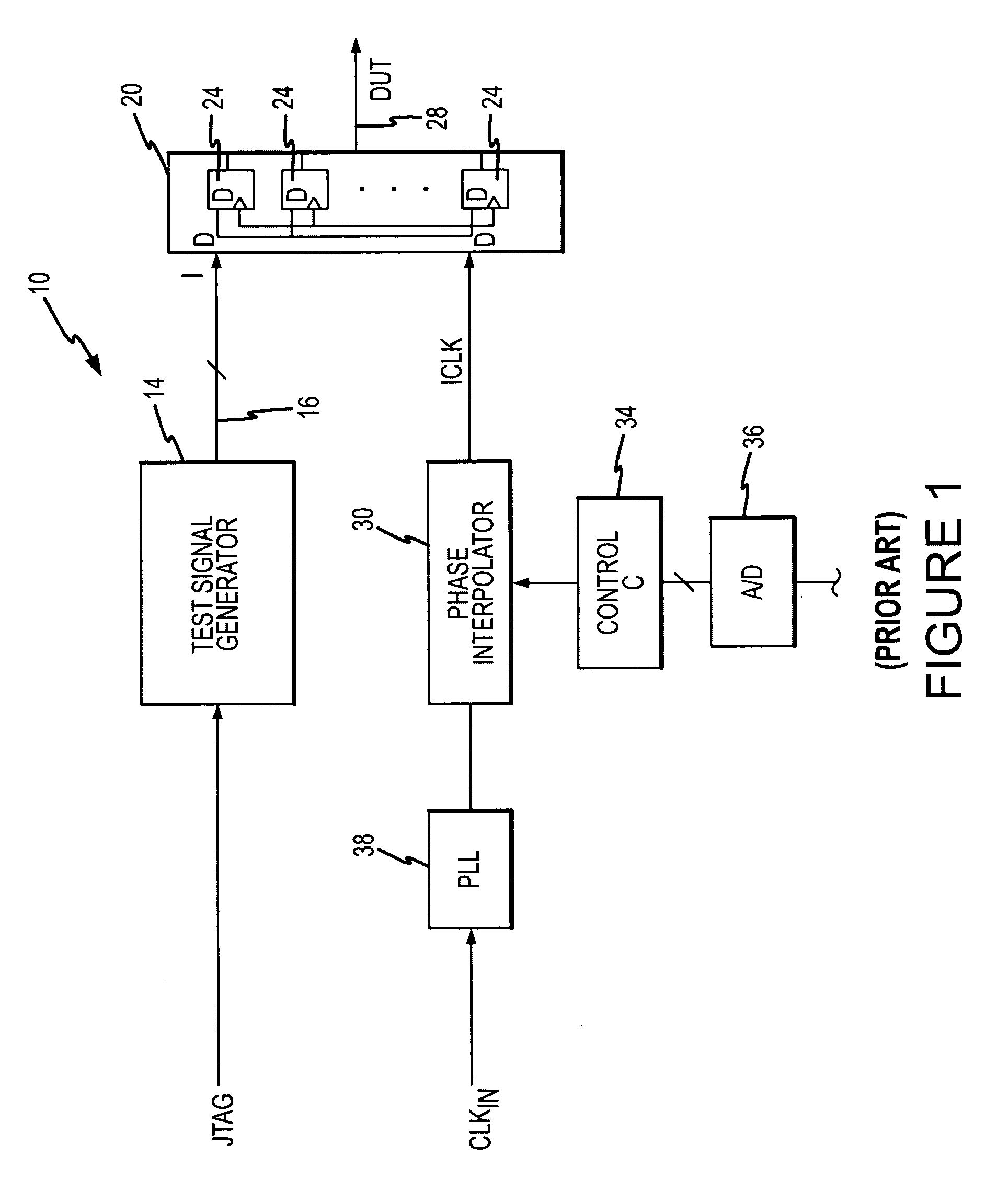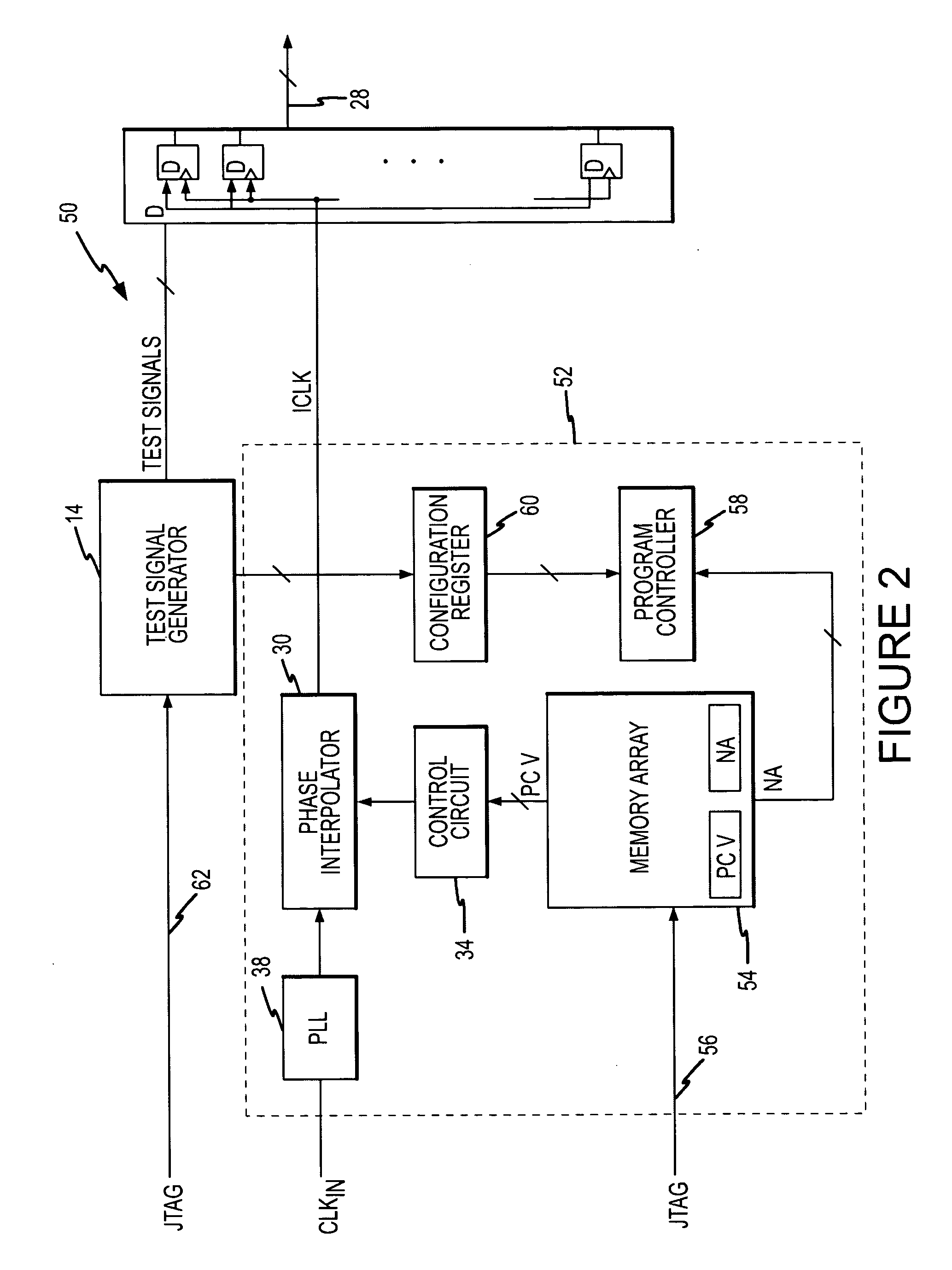System and method for injecting phase jitter into integrated circuit test signals
a technology of integrated circuit and phase jitter, which is applied in the field of system and method for injecting phase jitter into integrated circuit test signals, can solve the problems of rapid change in timing, more difficult for digital signals to be acquired or captured by a receiving device during the eye, and the random variation of the switching time of a digital circui
- Summary
- Abstract
- Description
- Claims
- Application Information
AI Technical Summary
Benefits of technology
Problems solved by technology
Method used
Image
Examples
Embodiment Construction
[0018] A test system 50 according to one example of the present invention is shown in FIG. 2. The test system 50 includes a clock phase adjustment system 52 that uses some of the same components that are used in the prior art test system 10 of FIG. 1. Therefore, in the interest of brevity, an explanation of their operation will not be repeated. The test system 50 differs from the test system 10 shown in FIG. 1 in the manner in which the clock jitter system generates the phase control values that are applied to the control input of the control circuit 34. More specifically, in the test system 50, the phase control values are read from a memory array 54 at a location corresponding to an address from a program controller 58.
[0019] As shown in FIG. 2, the memory array 54 includes two fields at each address, namely the phase control value (“PCV”) field and a next address word (“NA”) field. The memory array 54 may be programmed with the phase control value and next address word pairs thr...
PUM
 Login to View More
Login to View More Abstract
Description
Claims
Application Information
 Login to View More
Login to View More - R&D
- Intellectual Property
- Life Sciences
- Materials
- Tech Scout
- Unparalleled Data Quality
- Higher Quality Content
- 60% Fewer Hallucinations
Browse by: Latest US Patents, China's latest patents, Technical Efficacy Thesaurus, Application Domain, Technology Topic, Popular Technical Reports.
© 2025 PatSnap. All rights reserved.Legal|Privacy policy|Modern Slavery Act Transparency Statement|Sitemap|About US| Contact US: help@patsnap.com



